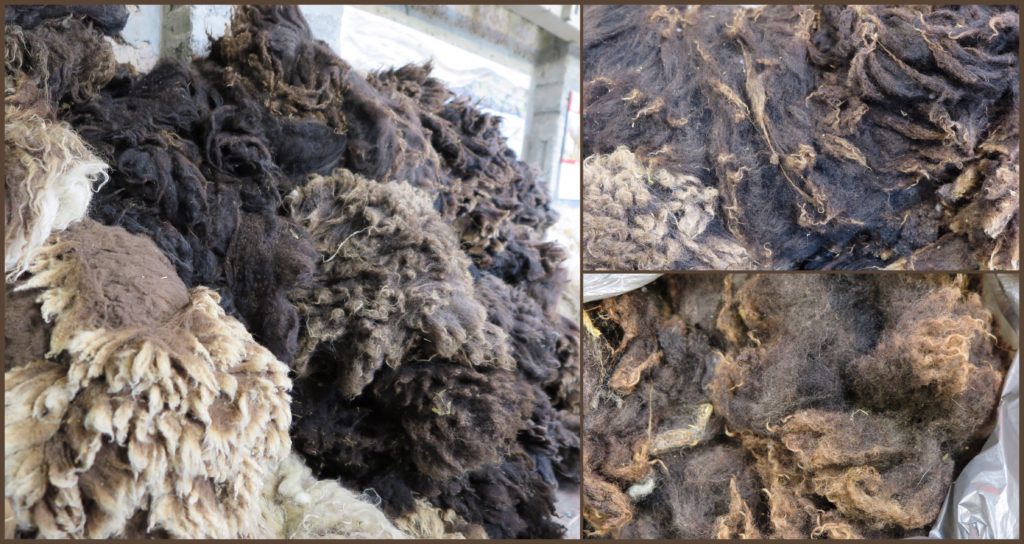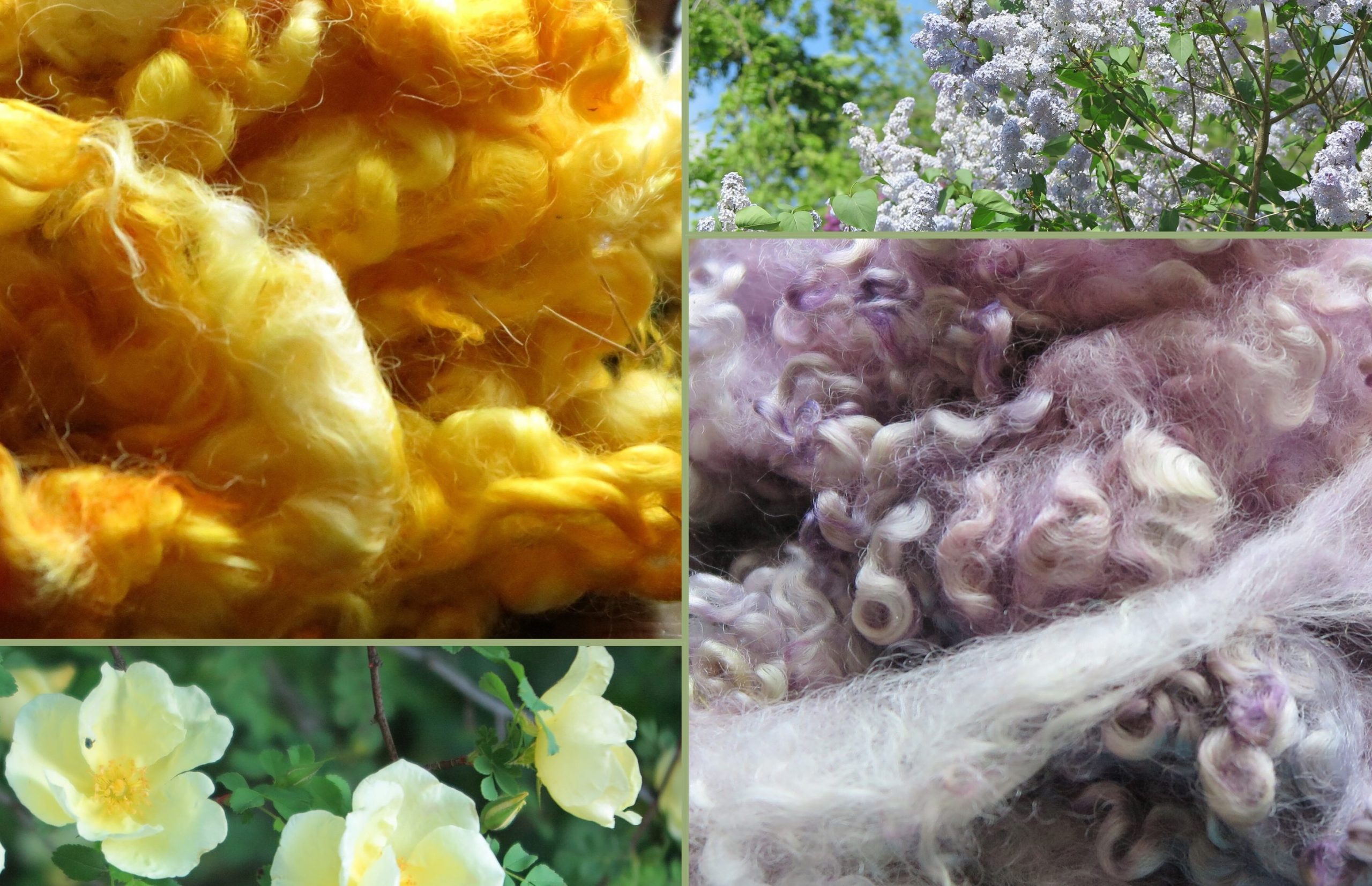Our plan for Wednesday was to catch the 10am ferry to Bressay, walk around for a little over an hour enjoying the island, then take the 11:30 back to Lerwick to have lunch before heading up to the Shetland College tour. The ferry dock for the Bressay ferry is in town, 5min from our apartment, and takes less than 10min to get across. I’d been looking across the short expanse of water since we’d arrived, intrigued by the hillsides and sheep on the other side.
This is not what we did. Well, not exactly. Around 8:10, TheEnabler suggested we just make the 9am ferry since we were more or less packed and ready to go, and that way we’d have a bit more time and flexibility to our day. So at 8:45 we walked our the door, headed down the lane, stopped to grab some coffees, and then strolled down to the ferry, arriving in plenty of time for the 9am. Several other Wool Weekers were hanging around for the Croft Tour. When Chris Dyer, the tour guide and owner of the croft, arrived he asked if we wanted to join the tour, because there was room for us if we did. We counted our cash – yes, we could do it! So, having changed our plans to leave earlier, we’d scored a tour of a croft.
The Croft Tour was great. We met his sheep, in their many many natural colors, pigs, and Welsh Sheep dog. He keeps his sheep very people friendly, though this years’ lambs are still shyer. Since Shetland stays cool through the summer, he shears his sheep mid-to-late summer as the act of shearing leaves the sheep a bit chillier, and thus just stressed enough that the ewes stop producing as much milk, encouraging lambs to wean. This is really different from the farm I visited in North Carolina, where they shear in February but leaving enough wool behind for a little warmth, so that the ewes lose the heavy fleece in the last period before lambing to reduce stress on them. There is no way you would want to leave a full fleece on a sheep through the summer in the heat of a North Carolina summer!
The Shetland sheep are also quite small and delicate in appearance but very hardy – they don’t need lots of lush pasture or great quantities of hay in the winter. He does provide a few vitamin supplements (copper doses a few times a year for example) to keep them in peak health. His small pampered (for Shetland sheep) flock has more twins than a larger flock kept further up the hills by a larger scale producer might.

I also asked about predators, fully expecting to hear it’s not much of a problem except the occasional stray dog (small island that it is). But, land predators weren’t at all what came to his mind – it’s predators of the air. Newborn lambs are the most vulnerable, mostly to crows and ravens, which will harass the lambs to get to its eyes and tongue. In particular, he has to watch out for those lambs which are twins as mom may be lambing the 2nd while the 1st goes unprotected. He keeps lambing ewes nearby so that newborns and mother can be brought inside the shed if needed. Once a few days old, they are mostly able to fend off such attacks. On the other hand, apparently newborns only a few hours old are happy and comfortable romping around in the snow and sleet which is still a regular occurrence in spring.

He also has a Welsh sheepdog, who was a lovely brown/cinnamon color. They work differently than a Border collie. They stay more erect and drive the sheep in front of them. This comes because they were initially bred to drive cattle long distances to market. We got to watch her in action for a bit.

Before we left the croft, TheEnabler and I selected a lovely dark chocolate fleece to purchase. We counted our cash again – just enough to cover the tour and the fleece. We’d spotted it early in the tour while in the shed learning a bit about the croft and we were keeping our fingers crossed nobody else wanted it, or we would have to fight for it. It has a fairly long staple for a Shetland, and is extremely soft. I’ll definitely be using at least some of it for Shetland lace. Since Chris Dyer can fill out all the export/import paperwork, I’m sending it straight to the US for when we return rather than pretending there’s anyway I’d spin and clean it all before we leave Germany. AwesomeE will hold it for me. I totally took advantage of our friendship there, giving her address while she was still asleep and unable to agree or protest.

We had lunch (included in the tour, so our dwindling cash stocks did not create problems) at the Speldiburn Cafe and then headed back to Lerwick on the ferry. The cafe included several displays of local craft, both stranded colorwork and lace.

Our last activity before boarding the ferry was a tour of Shetland College. We were able to see the knitting machines students learn on, and then the commercial machines they get access to later in their studies (if they specialize in knitwear or knitted items). The machines have set gauges: 2.5, 7, 12 needles (stitches) per inch… So designs have to work around that. They accept commercial orders with a price per piece. Finishing work (putting together the jumper front, back and sleeves) is completed elsewhere. Niella, who gave the lunch talk we attended the day before, contracts with the college to execute her designs.

After that, we finished our last bits of packing and took a taxi to the North Link Ferry dock to head back to Aberdeen. Thursday morning we arrived in Aberdeen, and boarded the train for Inverness. From there we took a bus to Fort William. For Friday we had scheduled a guided Geotour of the North Face of Ben Nevis, which included some wooly surprises.
